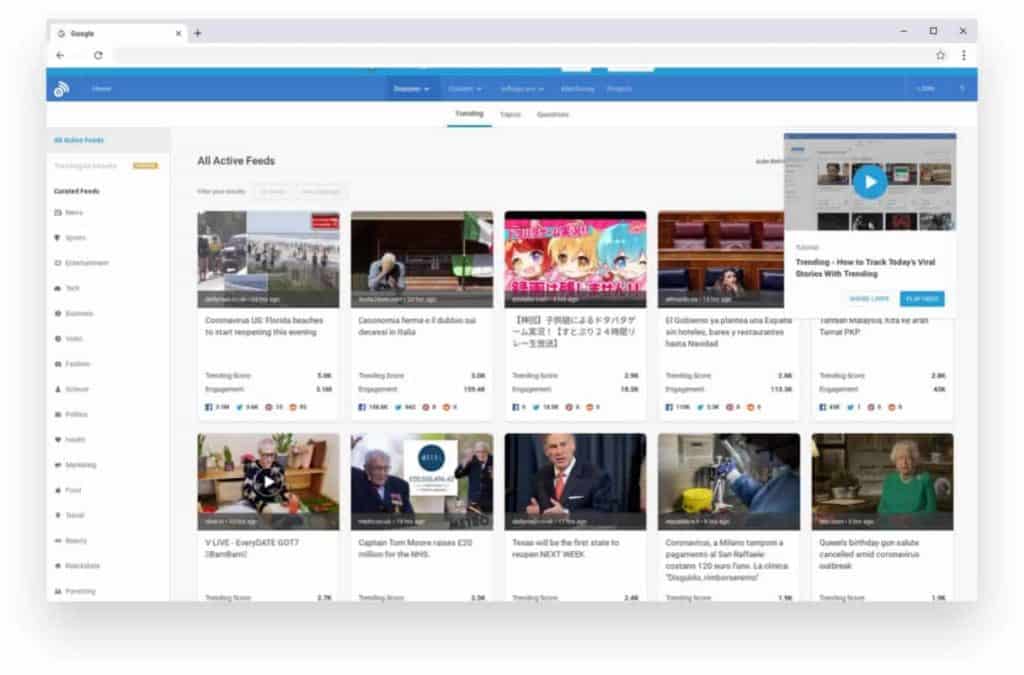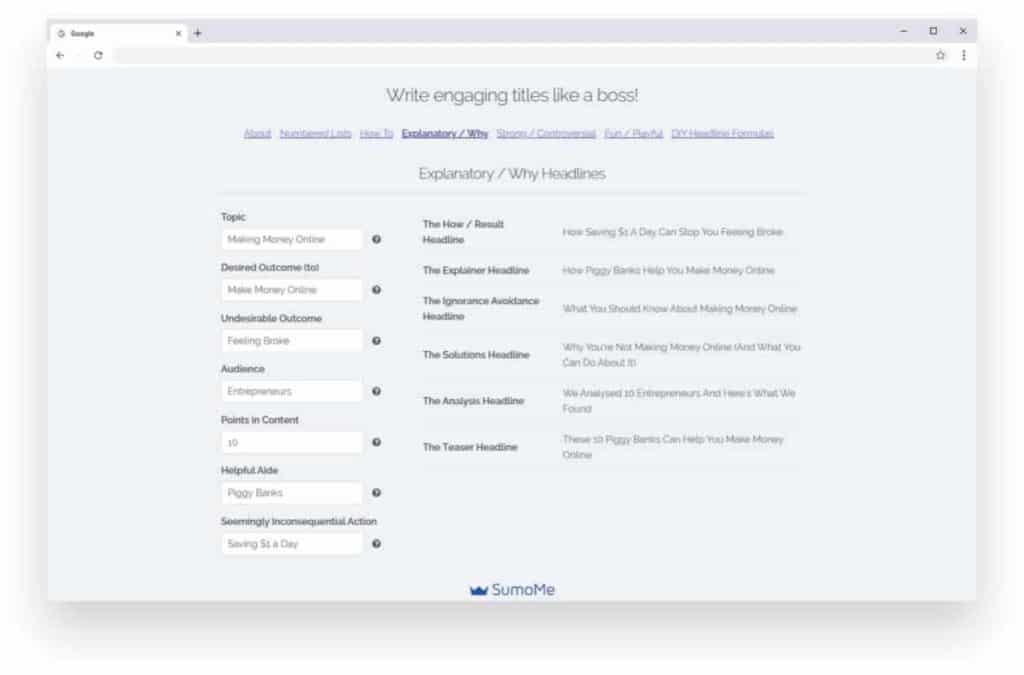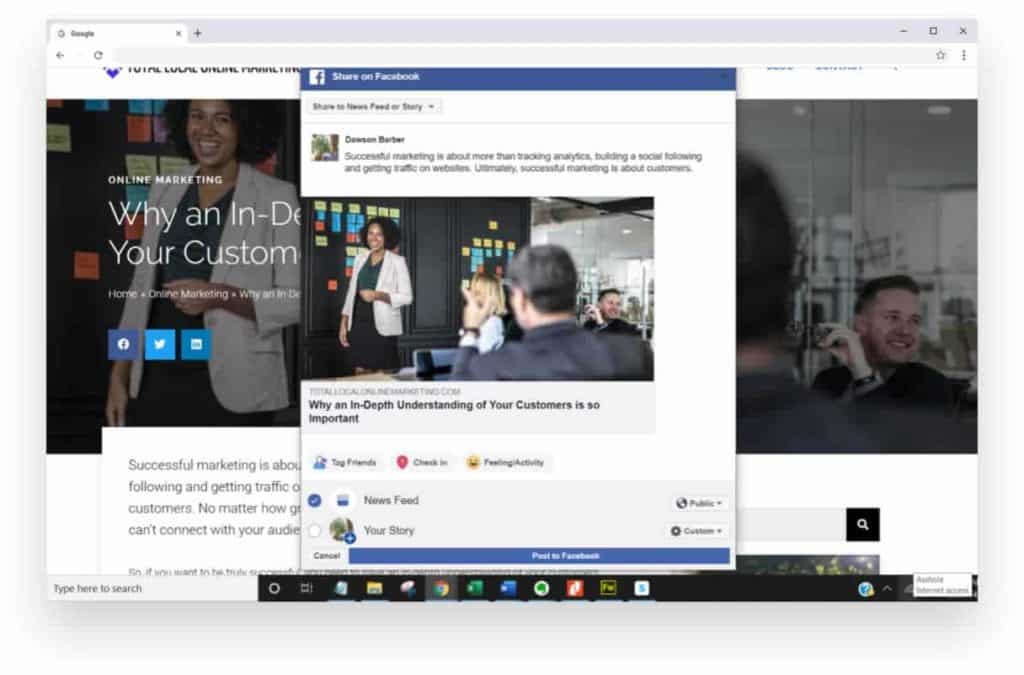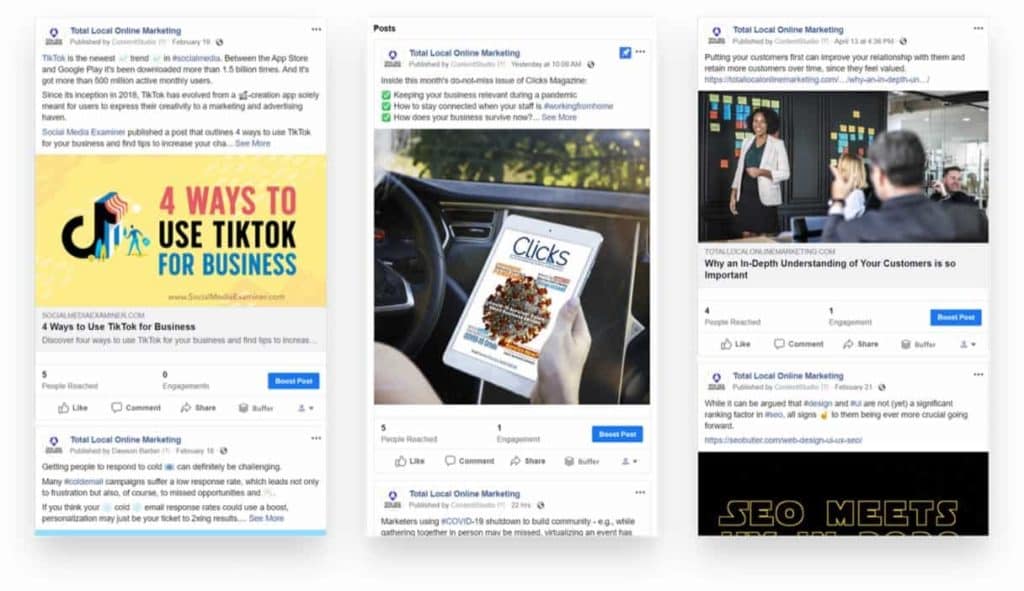Not getting the kind of results 📈 you’re expecting from your content marketing efforts? Don’t worry, you’re not alone. We talk to a lot of business owners and marketers, and many of them share that they feel like their content is often falling on deaf ears.
Here are 3 things you can do today to improve the results you get from your content.
Find More Intriguing Topics
No, we aren’t suggesting that you start creating content about something else entirely just because it’s a more popular topic.
But we ARE saying that you should do your homework to find the most intriguing angle on the topic you are writing on to give it the best chance at really resonating with your audience.
One way to do this is to look at currently trending stories related to your topic.
One of our old marketing mentors said that we should always “try to speak to the conversation that’s already happening in their mind.”
He meant that if you can find a way to relate your message to something they are already paying attention to and focused on, you’ll have a better chance at getting their attention for yourself.
Your challenge is to find a trending topic that’s already getting a lot of attention and then tie your message to that topic in a creative way that doesn’t seem too 💪 forced 💪.
How do you find trending topics? One of our favorite tools is BuzzSumo, whose free version is powerful enough to add a ton of value.

Take BuzzSumo for a spin. We bet you'll be impressed with it.
Spice 🌶️ up Your Headlines
In many ways, the headline is the most important part of a piece of content. It’s the cover people judge the book by, so to speak. In our current outspoken era, people may even sound off their opinion or share an article based on the headline alone.
There are a few things that help headlines sell:
- Topic keyword signals that trigger interest — e.g. someone frustrated with ad reach may perk up the instant they see a blog title that mentions “Ad Blocking”
- Clarity — a.k.a., does the reader understand clearly understand what the article will be about? Each headline is a promise
- Action verbs — try to eliminate linking verbs like “is” or “will,” and use strong action verbs or gerunds near the front of the headline instead. Not “According to Recent Study, Brand X Is Gaining on Brand Y” but “Brand X Pummeling Brand Y, Says Study”
- Length — blog headlines should be concise and clear, but that doesn’t mean they have to be short. eMarketer data shows that blogs with headlines 90-99 characters long outperform shorter ones
- Relevance to the post — tricking someone into clicking on your article with deceptive “clickbait” headlines improves your views and CTR, but it hurts your goals. Always balance appeal with accuracy
And then there are headline structures that are absolutely proven to work that you can put to use immediately.
BuzzSumo has some great data on top-performing headlines for B2C companies as well as B2B companies.
You can use the following phrases and you are almost guaranteed to get more attention to your content:
- “How to…”
- “X ways…”
- X secrets to…”
- “X things…”
- “The X best…”
- “This is why…”
- “This is how…”
Don’t overthink it – copy the headline formulas that are proven to work (notice that we did)!
And if you're feeling a little lazy or you just want a shortcut, you can't go wrong with SumoMe's Kickass Headline Generator.

Select a type (About, Numbered Lists, How to, and so forth) enter some details (topic, desired outcome, undesirable outcome, and so forth) and select one of the generated headlines.
Maximize the Visibility of Your Content
Unless your blog already has a lot of subscribers 😎, simply clicking the Publish button isn't going to lead to the kind of results you're looking for.
You need to take responsibility for getting your content seen by people.
This means, at minimum, you need to do the following 3 things.
Search
The competition for positions at the top of the search results – where all the clicks happen – is fierce and, unless you have a highly authoritative and trusted domain, it means you shouldn't count on search engines to send a lot of traffic to your blog posts
That said, basic “on-page” SEO is one of the fundamentals so you need to attend to it.
Here's a quick-and-dirty list of the things that should be on your basic SEO checklist:
- You've done your research and have identified a keyword that could bring you some search engine traffic
- Your target keyword appears in the page title (the most important on-page SEO signal)
- You've written a descriptive, relevant excerpt/description that includes a call-to-action (the title and description appear in the search results and need to really stand out to capture clicks)
- Synonyms and related keywords appear through the content to reinforce the overall topic of your post
- You've tagged images with a descriptive alt tag
- You've selected a relevant category and have added some descriptive tags (we're assuming you're using a blogging platform like WordPress)
- You've added links from other pages on your website/blog with content that's relevant to the topic of your blog post
Finally, make sure you use a SEO tool ⚙️ to help you optimize your post.
Our go-to WordPress SEO plugin is RankMath (like so many others, we used to use Yoast, but since RankMath's free version offers better performance and so many more features than Yoast's premium version, we made the switch).
Social
With billions of active users, social media sites like Facebook, Instgram, Twitter, LinkedIn, and TikTok offer you the opportunity for a lot of exposure for your content.
But there are several things you need to do to even have a shot at that opportunity.
Make Your Content (Easily) Shareable

Add social sharing buttons to your website so people have the option to share your content while they're consuming it.
And make sure that you've optimized your post for social sharing (RankMath SEO plugin makes this easy with options for optimizing titles, descriptions, and images for Facebook and Twitter).
Share Links to Your Content
Post links to your content to your social media profiles and pages – and encourage people to like, comment, share, retweet, and so forth.
Assuming your post has been optimized for sharing, simply pasting in the link will autopopulate the post with the image, title and description.
But don't stop there. Make sure you add your own descriptive text in the message area to encourage people to click on the link and read the full post.
Boost Your Posts

As you may know, organic reach continues to fall, so only a handful of the people who make up your audience are going to see the content you share.
This means you need to accept the fact that you have to invest in paid promotion.
And if you've ever shared anything to your page on Facebook, you should already be familiar with one form of paid promotion: the boosted post.
A boosted post is a form of advertising on Facebook that doesn't have all of the options of a regular Facebook ad, but it's so ridiculously easy to boost a post that, for many business owners and marketers, it's a fair trade-off (it really isn't).
Skeptical about the value of investing a portion of your hard-earned dollars into content marketing?
You may find it helpful to know that, according to a 2018 CMI survey, the typical top-performing B2C company allocated 38% of their overall marketing budget to content, and top-performing B2B companies allocated an average of 40%.
On the flip side, the least-successful B2B companies spent just 14%.
If you have a list of 📧 subscribers, you should notify them every time you publish a new post.
Ideally, this should “happen” automatically, provided you have an “RSS to email” automation with your email service provider (you can do a final quality control check by enabling notifications before sending out the broadcast).
If you don't have a list of email subscribers, you're going to want to start building one – not just because you want to notify people when you have published a new post but also because email, in general, continues to be one of the most effective marketing tools available today.
Whether you're already building an email list or you're going to start now, make sure you add a call-to-action (e.g., “Subscribe for Updates”) somewhere in your posts, in the sidebar as a “sticky” widget, or as a popup.
Time to Get to Work
In this post, we've outlined 3 actionable steps you can take to start getting better results from the content you're publishing:
- More intriguing topics
- “Spicier” headlines
- Maximum visibility
We've pointed out some tools/resources that can help you in your efforts..
Now it's time for you to put this into action (and let us know how you make out in the 💬 comments 💬 below).
Tagged with:
